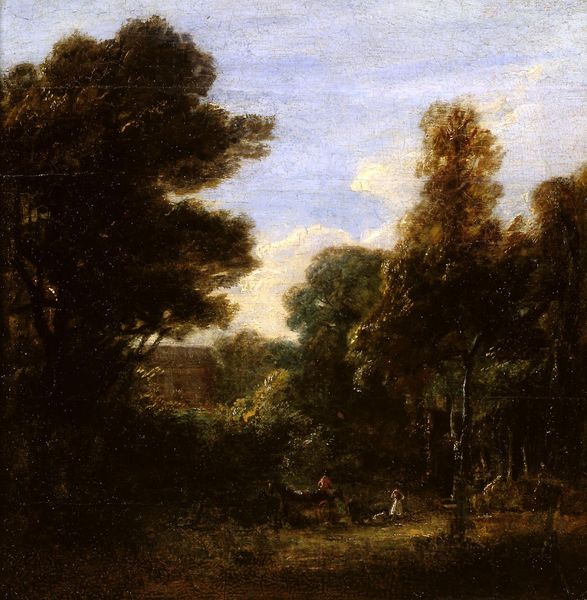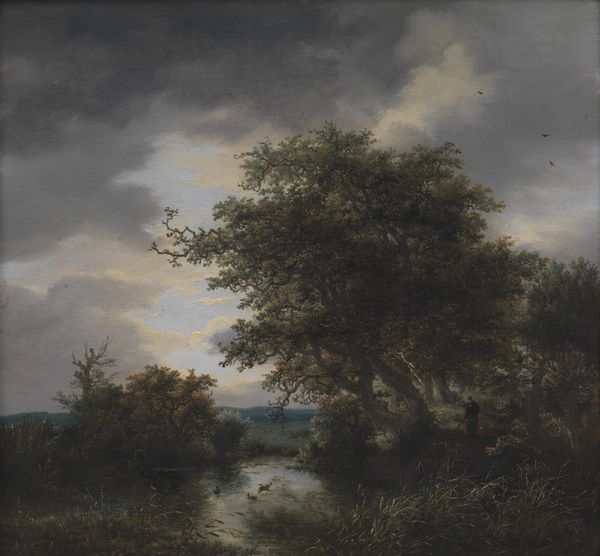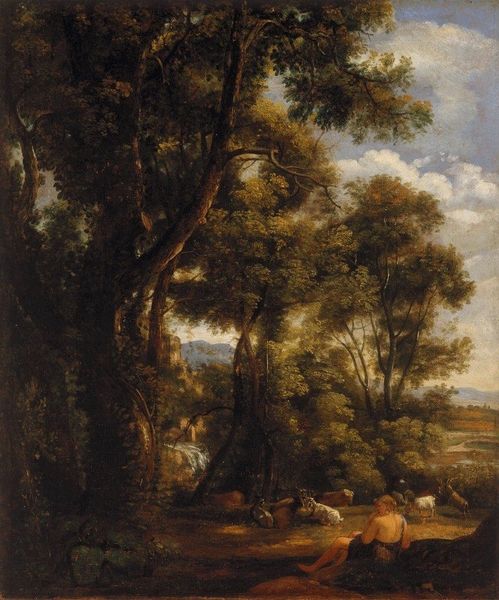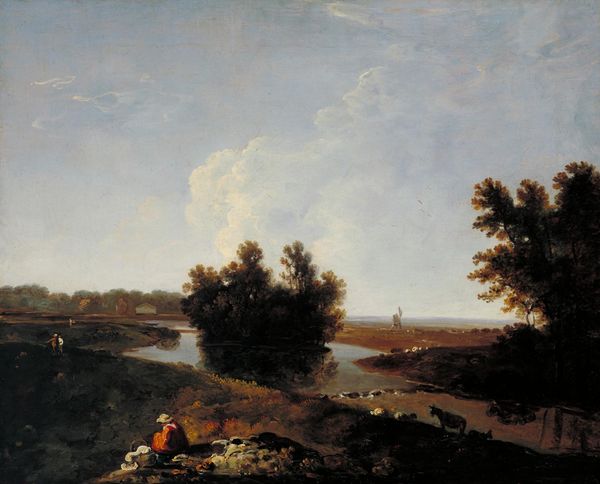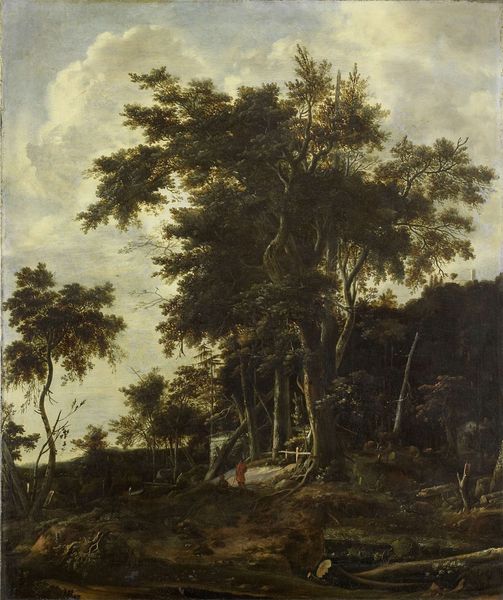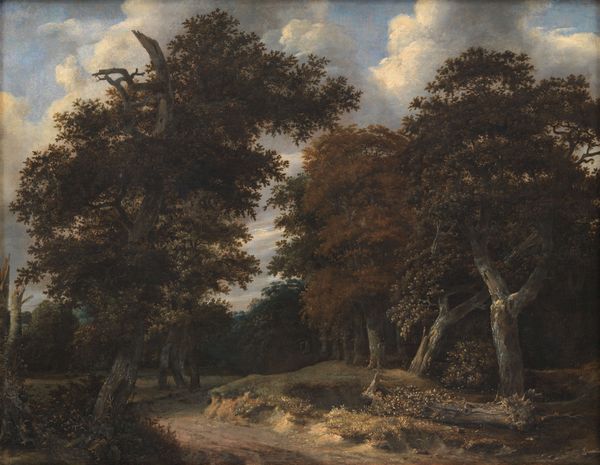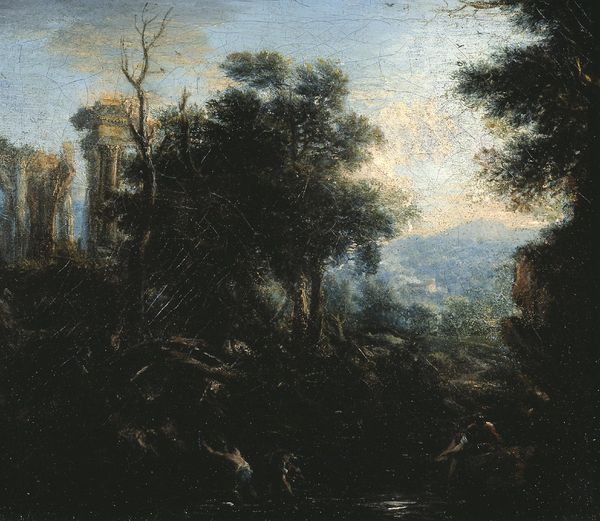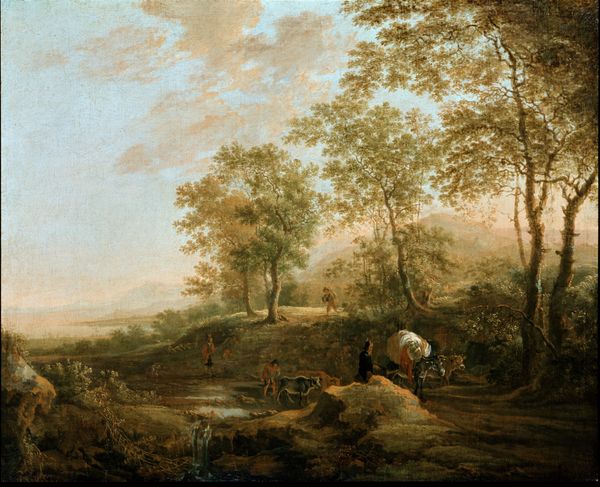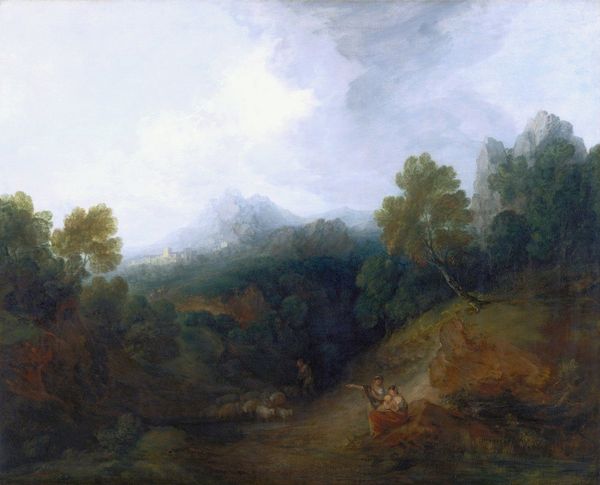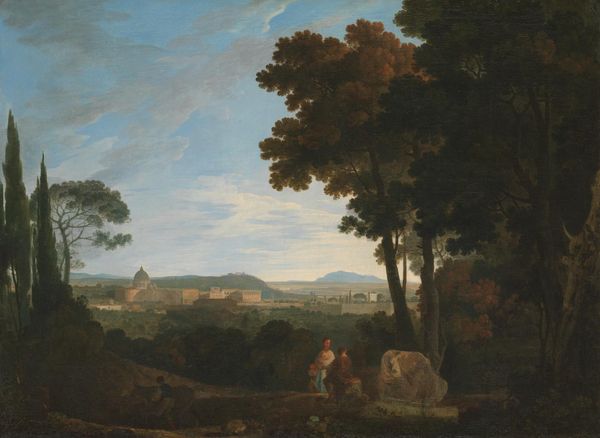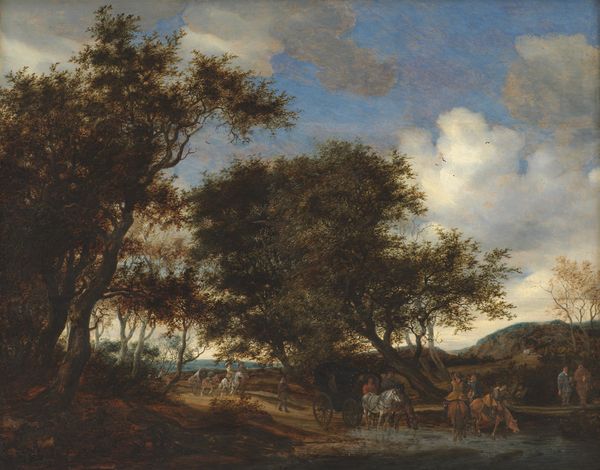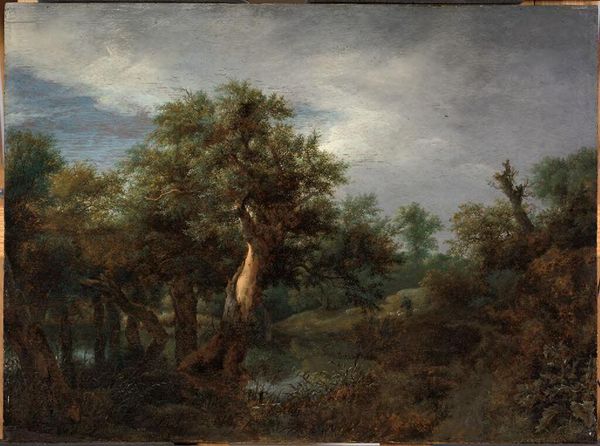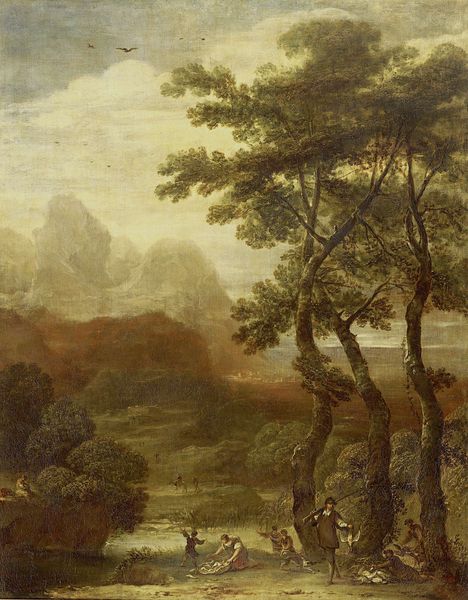
Dimensions: support: 489 x 635 mm
Copyright: CC-BY-NC-ND 4.0 DEED, Photo: Tate
Curator: Richard Wilson painted "Ariccia," held within the Tate Collections, sometime during his lifetime, offering us a glimpse into an Italian landscape. Editor: The interplay of light and shadow creates a very dramatic atmosphere. It's so interesting how the clouds are brighter, and the darkness hides secrets in the trees. Curator: Indeed, Ariccia was significant as part of the Grand Tour for Britons, representing an idealised classical past, a nostalgic return to Arcadia. Editor: I see how Wilson uses the landscape itself as a compositional device. The trees frame the clearing, focusing our eyes toward the building almost hidden in the distance. Curator: The figures here seem so small in comparison to nature. They are dwarfed by the imposing landscape, hinting at humanity's place within a much larger cosmic order. Editor: The overall structure of light and shadow, I think, is what makes the picture feel so captivating, lending it a certain enduring quality. Curator: Absolutely, the painting operates as a cultural touchstone, connecting us to longstanding traditions of landscape and the romantic lure of Italy.
Comments
Join the conversation
Join millions of artists and users on Artera today and experience the ultimate creative platform.
tate 6 months ago
⋮
This picture depicts the wooded countryside around Ariccia, a town sixteen miles to the south of Rome, on the Via Appia Nuova. The origins of the town lie in the ancient Latin city of the same name, which lost its independence following the dissolution of the Latin League in 338 BC. Ariccia was popular with the Romans who built numerous villas in the surrounding woods. Celebrated for its groves, Ariccia also came to be associated with the goddess Diana, who, according to legend, used it as her hunting grounds. During the seventeenth-century Ariccia attracted the attention of the French landscape painter, Gaspard Dughet (1615-75), who used it as the basis for a number of his celebrated classical landscapes. By the mid-eighteenth century Grand Tourists, attracted by its classical associations and its beautiful, shaded scenery, flocked to Ariccia, commissioning views from landscape painters as souvenirs. Richard Wilson, whose own fascination with Ariccia was undoubtedly inspired by the example of Gaspard Poussin's paintings, made several pictures of the subject, both during and following his visit to Italy from 1750 to 1756. These included a number of versions of the present composition. It is not known exactly when or where Wilson painted the present picture, although its early history is well recorded. In October 1761 the antiquarian and collector, Thomas Hollis (1720-74) wrote in his diary: 'Mr Wilson, the Landskip Painter breakfasted with me, and thanked me, handsomely, for having presented a Landskip picture of his, which I had bought at Capt. Hamilton's sale of pictures for £10-10. to the British Museum. Much discourse concerning his own situation and views; and about virtu' (Constable, p.193). Wilson must, therefore, have painted the picture before 1761, possibly in Italy. Hollis, a noted radical, had himself made two visits to Italy, in 1748-9, and again in 1750-53. It was on this second visit that Wilson painted Hollis's portrait (Harvard University). He also commissioned from Wilson a view of the Grotto in Villa Madama (untraced). However, the present picture, as his diary entry indicates, appears to have been purchased upon his return to England. Hollis, who also commissioned six pictures by Canaletto in Italy, was clearly discriminating in his purchases. He recommended to a friend in September 1760 that 'no virtu of any kind to be purchased in Italy for the first six months; and with great caution afterwards' (John Ingamells, A Dictionary of British and Irish Travellers in Italy 1701-1800, New Haven and London 1997, p.513). The present picture was transferred from the British Museum to the National Gallery in 1880 and from there to the Tate Gallery in 1919. Unfortunately, the application of a bitumen varnish has darkened the surface of the picture considerably. An indication of its original condition can be gained by comparing it to a similar version in the collection of the late Sir Brinsley Ford. It is not known which of these two versions was painted first. However, it has been suggested that the Tate picture is the earlier of the two, the Ford picture being 'entirely typical of the highly finished, rather small-scale cabinet pictures which Wilson produced within the first five years or so after his return to England' (Solkin, p.203). The earliest recorded owner of the Ford picture was the architect, Sir William Chambers (1723-96), who was in Italy at the same time as Wilson, although it is not known whether Chambers actually commissioned the work from him, or even knew him, at that time. A drawing, which relates closely to the Ford picture, is in the British Museum (Department of Prints and Drawings), while a third related painting belongs to the Earl of Pembroke at Wilton House, Wiltshire. Further Reading:W.G. Constable, Richard Wilson, London 1953, p.193David H. Solkin, Richard Wilson. The Landscape of Reaction, exhibition catalogue, Tate Gallery, London 1982, p.203 Martin PostleJune 2001
